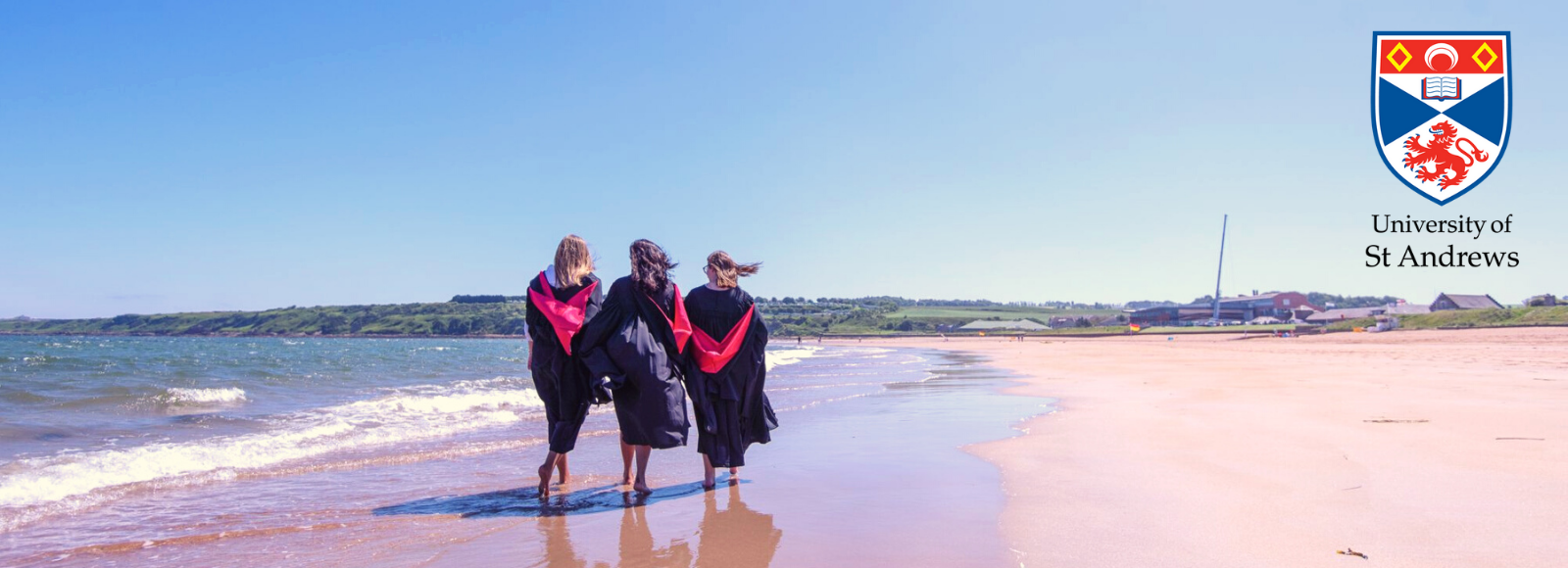Masters Degree Description
The Digital Art History course is an online self-paced programme, with options to study for a PGCert, PGDip, or MLitt.
Highlights
- First degree programme in Digital Art History in the UK
- Delivered jointly by the School of Art History and the School of Computer Science
- Flexible and fully online
Entry Requirements
A 2.1 Honours undergraduate degree. If you studied your first degree outside the UK, see the international entry requirements.
The qualifications listed are indicative minimum requirements for entry. Some academic Schools will ask applicants to achieve significantly higher marks than the minimum. Obtaining the listed entry requirements will not guarantee you a place, as the University considers all aspects of every application including, where applicable, the writing sample, personal statement, and supporting documents.
Application requirements
- CV that includes your personal details with a history of your education and employment to date
- personal statement (500 words)
- sample of your own, single-authored academic written work (2,000 words)
- two original signed academic references
- academic transcripts and degree certificates
Fees
For fees and funding options, please visit website to find out more
Student Destinations
Alumni of the School of Art History have gone on to work in a variety of global, commercial, financial, and research institutions, including:
- BBC
- British Library
- Christie’s
- Country Life magazine
- Legal and General
- National Museums Scotland
- Phaidon Press
- Royal Archives
- Sotheby’s
- Tiffany and Co
- Vertigo Films
- The Week magazine
The Careers Centre offers one-to-one advice to all students as well as a programme of events to assist students in building their employability skills.
Module Details
PG Cert & PG Dip
Students studying for a PGCert take three modules in Art History and one module in Computer Science from those listed below. Those studying for a PGDip take five modules in Art History and three modules in Computer Science from the following.
- Introduction to Digital Art History and the Humanities: introduces the key issues, themes, and ideas relating to Digital Art History.
Programming in Python: introduces and revises modelling, design and implementation in Python.
- Digital Art – From Computer-generated Projects to Artificial Intelligence: analyses the ways in which artists, archivists, curators, and other museum professionals have implemented digital tools, materials and methodologies.
- Digital Tools – Visualisation, Interpretation and Analysis: introduces the key techniques and digital platforms available to art historians and the ways in which they can facilitate (or limit) our analysis, interpretation, and visualisation of art historical data.
- Project Work – Theory: will challenge students to critically analyse the methodological choices made by digital art historians. A series of major research projects will serve as case studies, allowing students to explore how the theories and approaches central to the disciplines of Digital Humanities and Art History work in practice.
- Project Work – Data Analysis: requires students to design and develop their own research project based on a given data set drawn from real collections.
- Data and information visualisation: focuses on the question of how to utilise visual representations to make information accessible for exploration and analysis.
- Machine learning algorithms: covers the essential theory and algorithms, including mathematical foundations, and methodological approaches, using a variety of regression, classification and unsupervised approaches.
- Complex systems modelling and simulation: introduces a range of techniques and their applications to different classes of problems, with a practical focus on modern network-based models and simulation.
- Discrete optimisation: covers the theory, tools and technologies developed and used to solve problems in Integer Programming and Combinatorial Optimization.
- Data-driven systems: is an advanced research-focused module that presents the foundations of distributed systems and techniques that process data.
- Numeric optimisation: takes linear algebra and optimization as the primary topics of interest and solutions to machine learning problems as the applications of the resulting tools, techniques and algorithms.
- Research methods in data science: introduces the skills necessary for the planning, data gathering, data analysis and dissemination stages of data science research.
- Knowledge discovery and datamining: covers many of the methods found under the banner of ‘datamining’, building from a theoretical perspective but ultimately teaching practical application.
MLitt
Those studying for an MLitt take five modules in Art History, three modules in Computer Science and complete a dissertation or final project in an agreed subject.
Dissertation or final project
Following the successful completion of the coursework, MLitt students undertake a dissertation module of 60 credits (15,000 words). The dissertation should demonstrate an element of independent thinking or originality of thought in the establishment of the argument and be based upon clearly founded research, analysis and interpretation. It should demonstrate the organisational and presentation qualities required for academic work.
The dissertation can follow the traditional route of a 15,000-word thesis, or can be delivered via an alternative format structure of a 10,000-word thesis plus 5000-word related digital project. Students can expect to meet with their supervisors at least three times during the research and writing of their dissertations and to make appropriate arrangements for the submission of drafts and timely feedback.
Learn more about University of St Andrews

Scotland’s first university, an experience like no other
Masters programmes to help you find your future.
Are you looking to earn an outstanding pos...
